WEDNESDAY 30 MAR 2022 at 12:15 and 12:45 PM
Robert Wyman Plaza at MEMORIAL ROAD & MAIN MALL, UBC
Concert at Robert Wyman Plaza: Confluence by Walker Williams
-
Armand Birk
Armand Birk is a BMus graduate from the University of Alberta, where he studied voice with Elizabeth Turnbull and Shannon Hiebert. Originally from Victoria, Birk’s initial experience as a musician was as a bassist for jazz and folk bands. Birk has performed internationally as a chorister at the Winspear Centre, the National Arts Centre and Carnegie Hall, among others. Recently named an RBC Emerging Conductor by the Winnipeg Symphony Orchestra, Birk is currently pursuing a career in orchestral conducting and recently began his graduate studies at the University of British Columbia. His primary teachers and mentors have been Petar Dundjerski and Jonathan Girard. He has also had the privilege of studying with Laurier Fagnan, Yoav Talmi, Daniel Raiskin, Michael Massey, Leonard Ratzlaff, and Angela Schroeder. Birk’s current and past work is varied including engagements with the UBC Symphony Orchestra, the UBC Opera, the Winnipeg Symphony Orchestra, the UofA Symphony Orchestra, the Edmonton Youth Orchestra, the UofA Opera, Contempo New Music Ensemble, and various choirs. In 2019, Armand founded a pre-professional chamber orchestra in Edmonton, the River City Chamber Orchestra, whose goal is to offer unique opportunities to budding young musicians.
Read More
-
Diamond Point
ArtistDiamond Point is a contemporary Coast Salish artist and educator, and a member of the Musqueam Indian Band. Point grew up on Reserve, and currently resides in Ladner with her daughter and husband. As an emerging artist, Point feels her artwork is current and belongs within the present, and she continues to develop and change her techniques and style throughout her experiences. In her work, Point respectfully incorporates traditional Coast Salish design elements to represent the beautiful teachings and history that her ancestors have passed down through generations since time immemorial. In 2014, Point’s work was included in Claiming Space: Voices of Urban Indigenous Youth at the UBC Museum of Anthropology. In 2018, Point created designs for the UBC Totem Park residences that were named after the traditional Musqueam village sites c̓əsnaʔəm, həm̓ləsəm̓ and q̓ələχən. In 2019, Point’s artwork became the logo for the Humanities, Arts, Science, Technology Alliance and Collaboratory (HASTAC) conference at UBC, on the traditional, ancestral and unceded territory of the Musqueam people. Point’s work was also showcased at the Richmond Brighouse Canada Line Station, as part of the 2019 Capture Photography Festival. Point is a graduate of the NITEP Indigenous Teacher Education Program in the Faculty of Education at UBC.
Read More
-
Walker Williams
ComposerWalker Williams (they/them) is an eclectic composer from rural West Virginia, whose compositional style runs the gamut from conservative tonality to avant-garde performance art (admittedly with a tendency towards ‘pretty music’). Walker is pursuing doctoral studies in composition at the University of British Columbia (UBC), and they hold a MMus from UBC, and a BA from Shepherd University in West Virginia.As a white settler, Walker has benefitted from the ongoing act of colonization in both the United States and Canada, and would like to acknowledge that their upbringing and education has taken place primarily on the homelands of the Massawomeck, Manahoac, and Musqueam nations.Read More
Join us for an afternoon performance of Confluence, a composition by Walker Williams. This outdoor concert will take place at Robert Wyman Plaza at the intersection of Memorial Road and Main Mall, UBC. Confluence is a musical response to Diamond Point’s banners – wəɬ m̓i ct q̓pəθət tə ɬniməɬ – that were installed along Main Mall as part of Soundings: An Exhibition in Five Parts. As part of their writing process, Williams met with Point to discuss the composition, as well as the protocols that should be observed in its writing and performance.
As The Score Research Cluster enters its second year, the Belkin and the School of Music are revisiting performances done as part of Soundings: An Exhibition in Five Parts. Confluence was initially performed as a multi-track recording by remote performers in 2020 when gathering in-person was not possible due to the COVID-19 pandemic. This original recording can be listened to on The Score Research Cluster website. The 2022 outdoor performance will be led by Armand Birk, a graduate student in the Orchestral Conducting program and the research assistant for The Score Research Cluster.
Diamond Point’s wəɬ m̓i ct q̓pəθət tə ɬniməɬ, a set of banners along Main Mall installed as part of the Soundings exhibition, carries the idea of a coming together and is based on traditions related to canoes and travel by water, inspired by Coast Salish canoe journeys. In keeping with the teachings of Point’s ancestors, the banners refer to protocols of arriving and asking permission to come ashore, while the Coast Salish design elements on the paddles announce who is arriving and where they are from.
Image (above): Diamond Point’s banners along Main Mall. Photo: Rachel Topham Photography
-
Armand Birk
Armand Birk is a BMus graduate from the University of Alberta, where he studied voice with Elizabeth Turnbull and Shannon Hiebert. Originally from Victoria, Birk’s initial experience as a musician was as a bassist for jazz and folk bands. Birk has performed internationally as a chorister at the Winspear Centre, the National Arts Centre and Carnegie Hall, among others. Recently named an RBC Emerging Conductor by the Winnipeg Symphony Orchestra, Birk is currently pursuing a career in orchestral conducting and recently began his graduate studies at the University of British Columbia. His primary teachers and mentors have been Petar Dundjerski and Jonathan Girard. He has also had the privilege of studying with Laurier Fagnan, Yoav Talmi, Daniel Raiskin, Michael Massey, Leonard Ratzlaff, and Angela Schroeder. Birk’s current and past work is varied including engagements with the UBC Symphony Orchestra, the UBC Opera, the Winnipeg Symphony Orchestra, the UofA Symphony Orchestra, the Edmonton Youth Orchestra, the UofA Opera, Contempo New Music Ensemble, and various choirs. In 2019, Armand founded a pre-professional chamber orchestra in Edmonton, the River City Chamber Orchestra, whose goal is to offer unique opportunities to budding young musicians.
Read More
-
Diamond Point
ArtistDiamond Point is a contemporary Coast Salish artist and educator, and a member of the Musqueam Indian Band. Point grew up on Reserve, and currently resides in Ladner with her daughter and husband. As an emerging artist, Point feels her artwork is current and belongs within the present, and she continues to develop and change her techniques and style throughout her experiences. In her work, Point respectfully incorporates traditional Coast Salish design elements to represent the beautiful teachings and history that her ancestors have passed down through generations since time immemorial. In 2014, Point’s work was included in Claiming Space: Voices of Urban Indigenous Youth at the UBC Museum of Anthropology. In 2018, Point created designs for the UBC Totem Park residences that were named after the traditional Musqueam village sites c̓əsnaʔəm, həm̓ləsəm̓ and q̓ələχən. In 2019, Point’s artwork became the logo for the Humanities, Arts, Science, Technology Alliance and Collaboratory (HASTAC) conference at UBC, on the traditional, ancestral and unceded territory of the Musqueam people. Point’s work was also showcased at the Richmond Brighouse Canada Line Station, as part of the 2019 Capture Photography Festival. Point is a graduate of the NITEP Indigenous Teacher Education Program in the Faculty of Education at UBC.
Read More
-
Walker Williams
ComposerWalker Williams (they/them) is an eclectic composer from rural West Virginia, whose compositional style runs the gamut from conservative tonality to avant-garde performance art (admittedly with a tendency towards ‘pretty music’). Walker is pursuing doctoral studies in composition at the University of British Columbia (UBC), and they hold a MMus from UBC, and a BA from Shepherd University in West Virginia.As a white settler, Walker has benefitted from the ongoing act of colonization in both the United States and Canada, and would like to acknowledge that their upbringing and education has taken place primarily on the homelands of the Massawomeck, Manahoac, and Musqueam nations.Read More
Related
-
Research Project
2019 - Ongoing
The Score: Performing, Listening and Decolonization
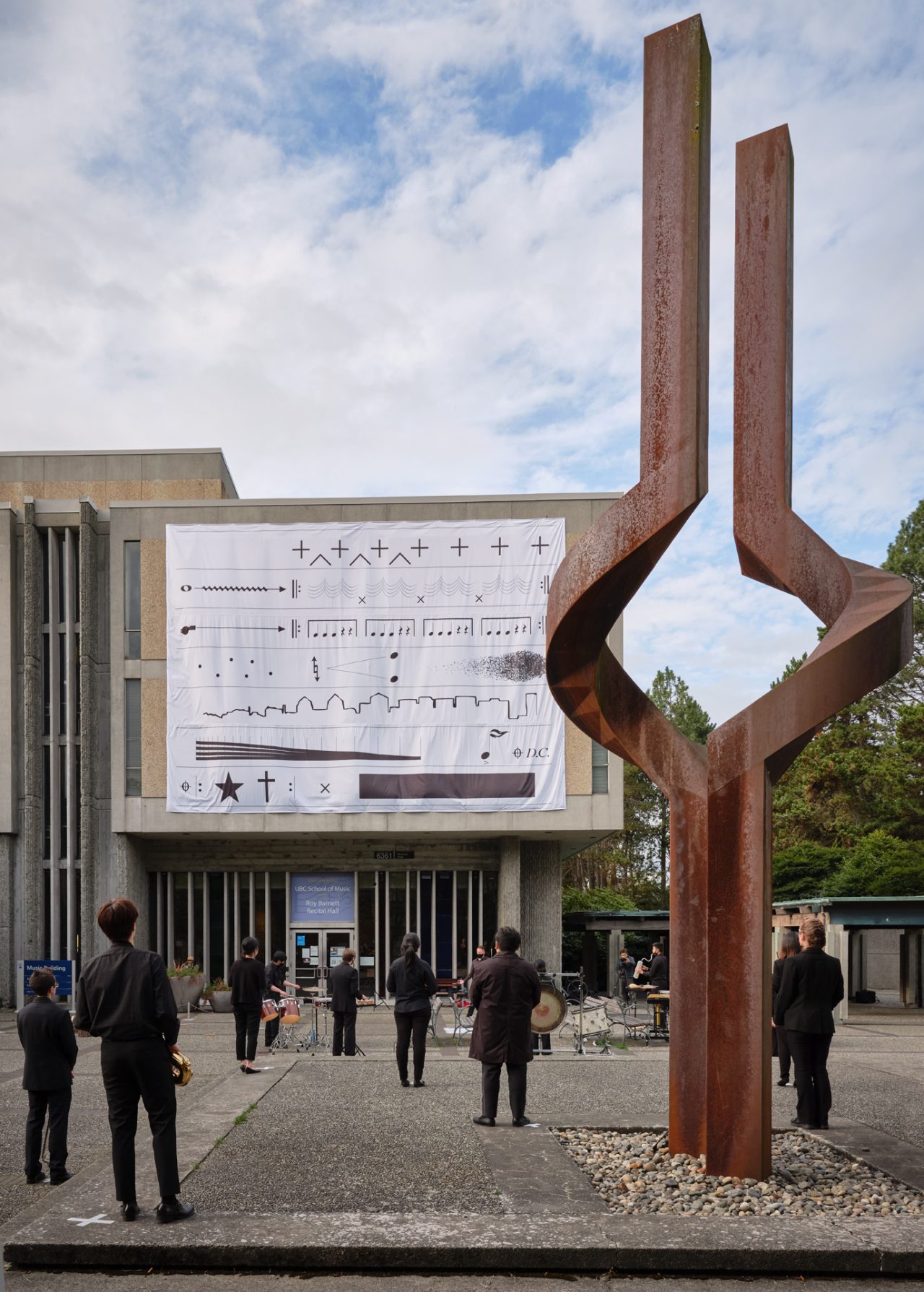
Through the performance and study of unconventional scores by Indigenous artists, the Score Research Cluster engages with decolonization by challenging existing sonic, physical and conceptual frames of Indigenous and settler–colonial knowledge.
[more] -
Event
13 February 2021
Kids Take Over UBC: Walking Tour with Artist Diamond Point
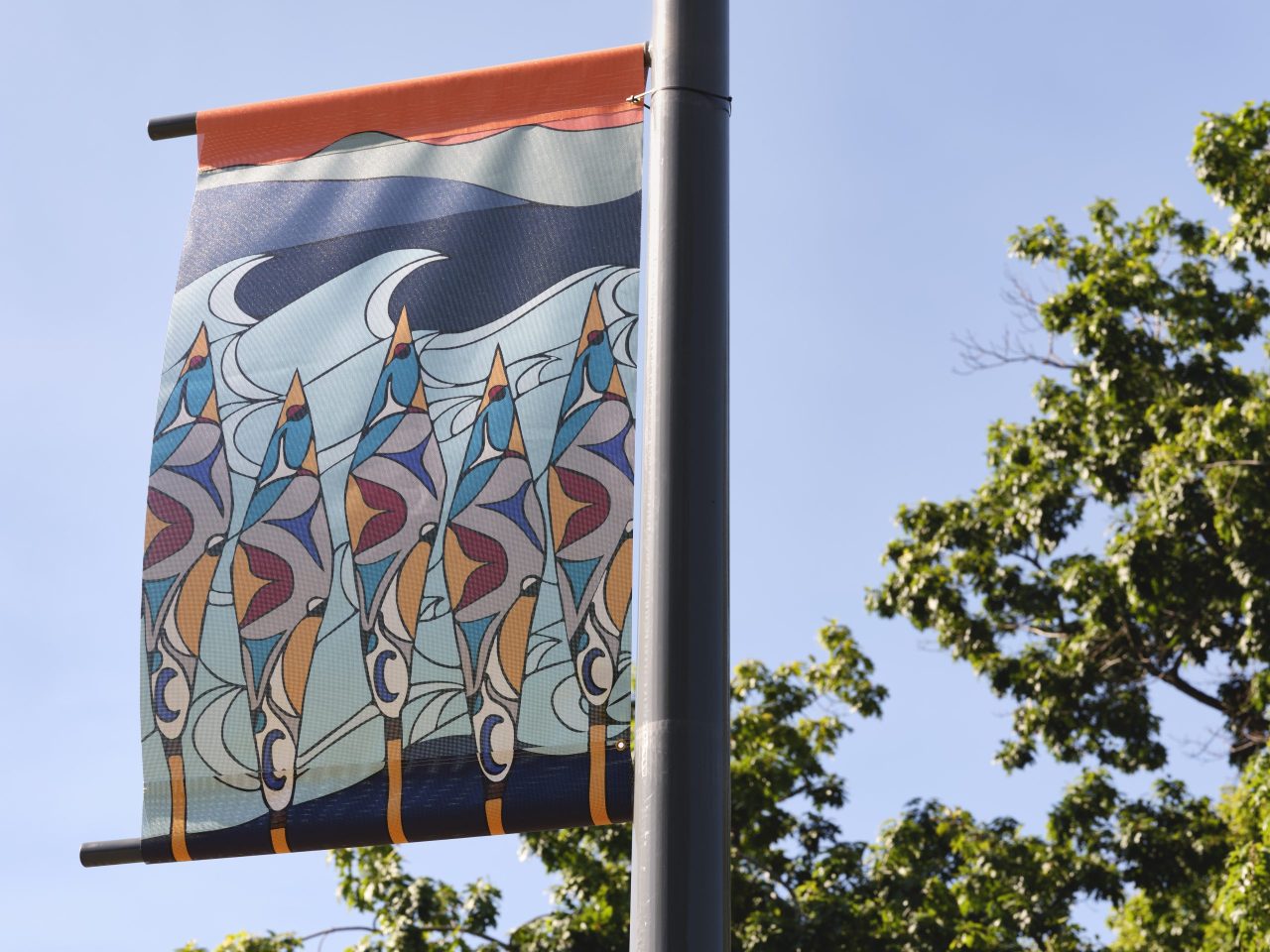
Join artist Diamond Point (xʷməθkʷəy̓əm / Musqueam) for an outdoor walking tour of her artwork, wəɬ m̓i ct q̓pəθət tə ɬniməɬ, a series of banners along Main Mall that run from James Hart’s Reconciliation Pole to the plaza near the Rose Garden on UBC campus. In keeping with the teachings of Point’s ancestors, the banners refer to protocols of arriving and asking permission to come ashore, while the Coast Salish design elements on the paddles announce who the arrivers are and where they've come from. Learn about the process of creating the design and colour in your own version of the banner.
[more] -
Event
10 Sep 2020
Soundings: Diamond Point and Coastal Wolf Pack

Forming two continuous lines on this part of the traditional, ancestral and unceded territory of the xʷməθkʷəy̓əm (Musqueam) people, wəɬ m̓i ct q̓pəθət tə ɬniməɬ by Diamond Point presents two images repeating in a sequence hung on the lampposts along UBC’s Main Mall from James Hart’s Reconciliation Pole to the plaza just beyond the Belkin.
[more] -
Event
Wednesday 20 Oct 2021 at 12:30 pm
The Score: Ladner Clock Tower Carillon Performance
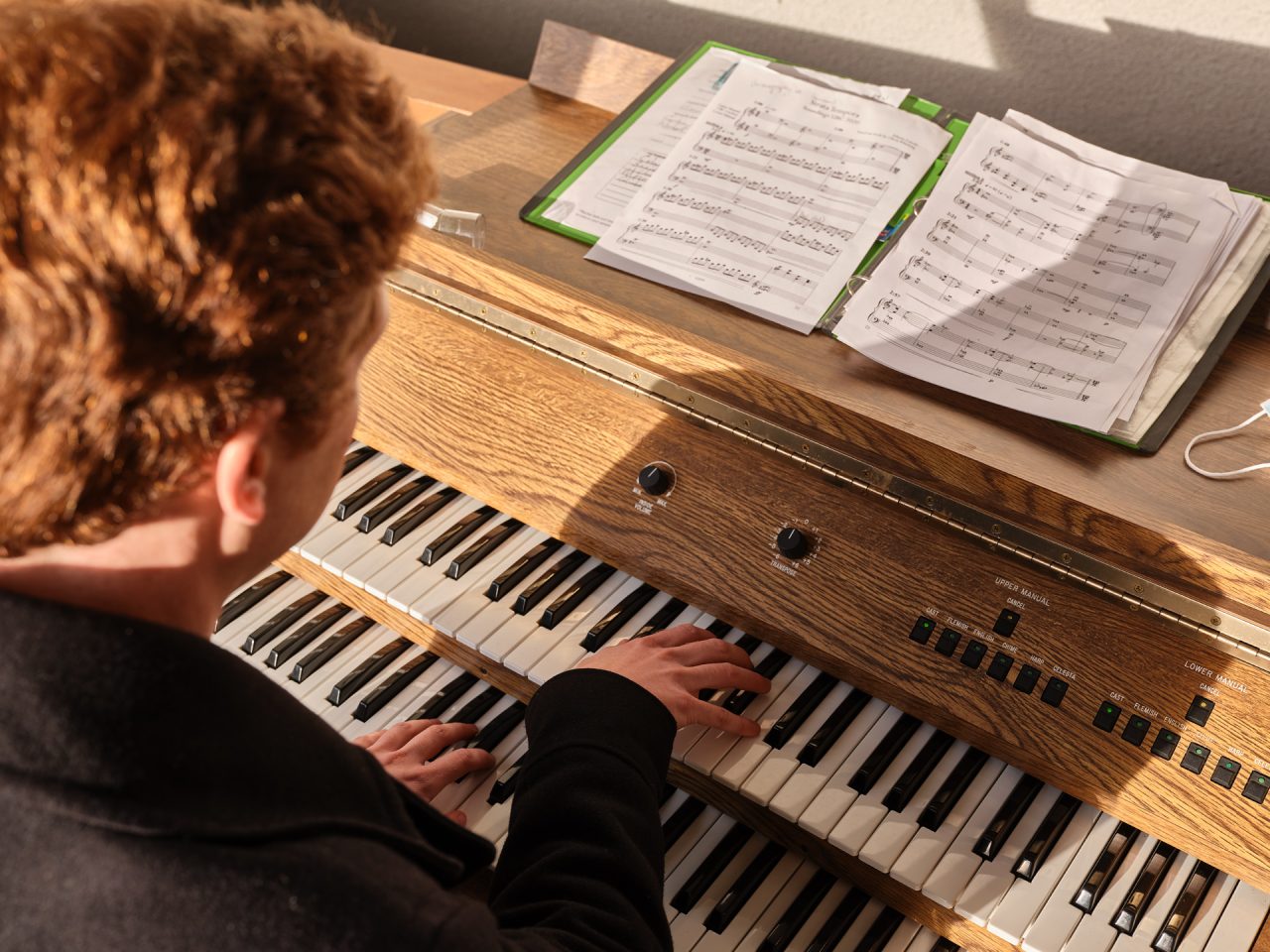
As The Score Research Cluster enters its second year, the Belkin and the School of Music are revisiting performances done as part of Soundings: An Exhibition in Five Parts from the fall of 2020. Athena Loredo's Strata Tempora (2020) is an interpretation of Olivia Whetung's Strata (2018) as a musical score, performed through the carillon and a brass ensemble at the Ladner Clock Tower. Initially performed in 2020, when much of UBC campus was shut down or quieted due to the COVID-19 pandemic, the work will be performed again in October 2021, when the rhythms of more typical years at UBC are present on campus.
[more] -
News
10 Dec 2020
Soundings: Marking Time
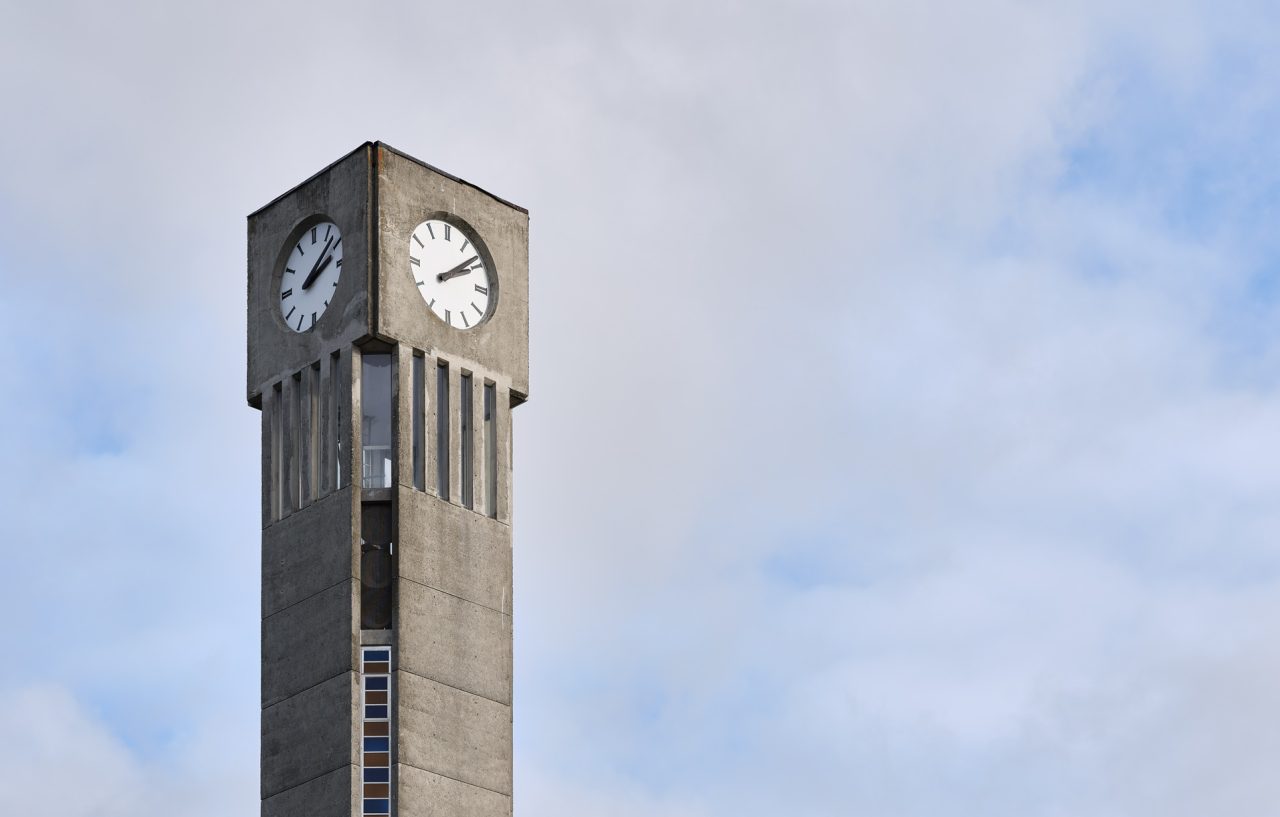 [more]
[more] -
Exhibition
8 Sep – 6 Dec 2020
Soundings: An Exhibition in Five Parts
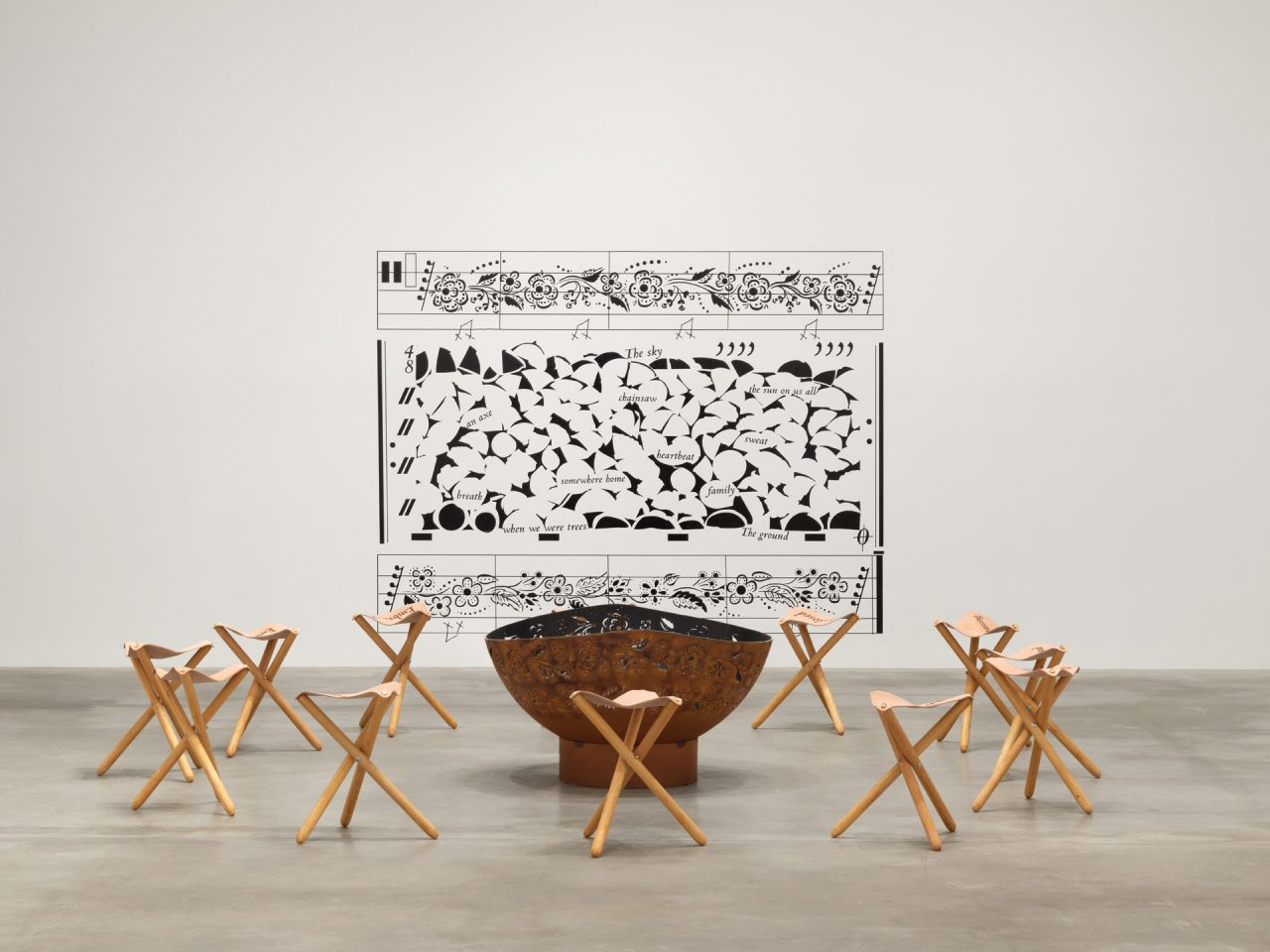
Soundings: An Exhibition in Five Parts features newly commissioned scores, performances, videos, sculptures and sound by Indigenous and other artists who respond to the question, How can a score be a call and tool for decolonization? Unfolding in a sequence of five parts, the scores take the form of beadwork, videos, objects, graphic notation, historical belongings and written instructions. During the exhibition, these scores are activated at specific moments by musicians, dancers, performers and members of the public, gradually filling the gallery and surrounding public spaces with sound and action. Curated by Candice Hopkins and Dylan Robinson, Soundings is cumulative, limning an ever-changing community of artworks, shared experience and engagement. Shifting and evolving, it gains new artists and players in each location. For this iteration on Musqueam territory, the Belkin has collaborated with UBC's Musqueam Language Program in partnership with the Musqueam Indian Band Language and Culture Department; School of Music; Chan Centre for Performing Arts; First Nations House of Learning and Museum of Anthropology to support the production of new artworks and performances by local artists.
[more] -
Event
Monday 30 Nov 2020 at 4:30 pm
Soundings: Tania Willard and Melody Courage

Surrounded/Surrounding includes a wood-burning fire bowl, etched leather camp stools and a life-sized rendering of the artist’s wood pile in a graphic score. Written on the split logs and the spaces between them are references to the breathing, beating labour that creates what a fire needs, as well as the trees, sun, sky and ground that surrounds and creates all else.
[more] -
Event
8 Oct 2020 at 4 pm
Soundings: Raven Chacon and Symphonic Wind Ensemble
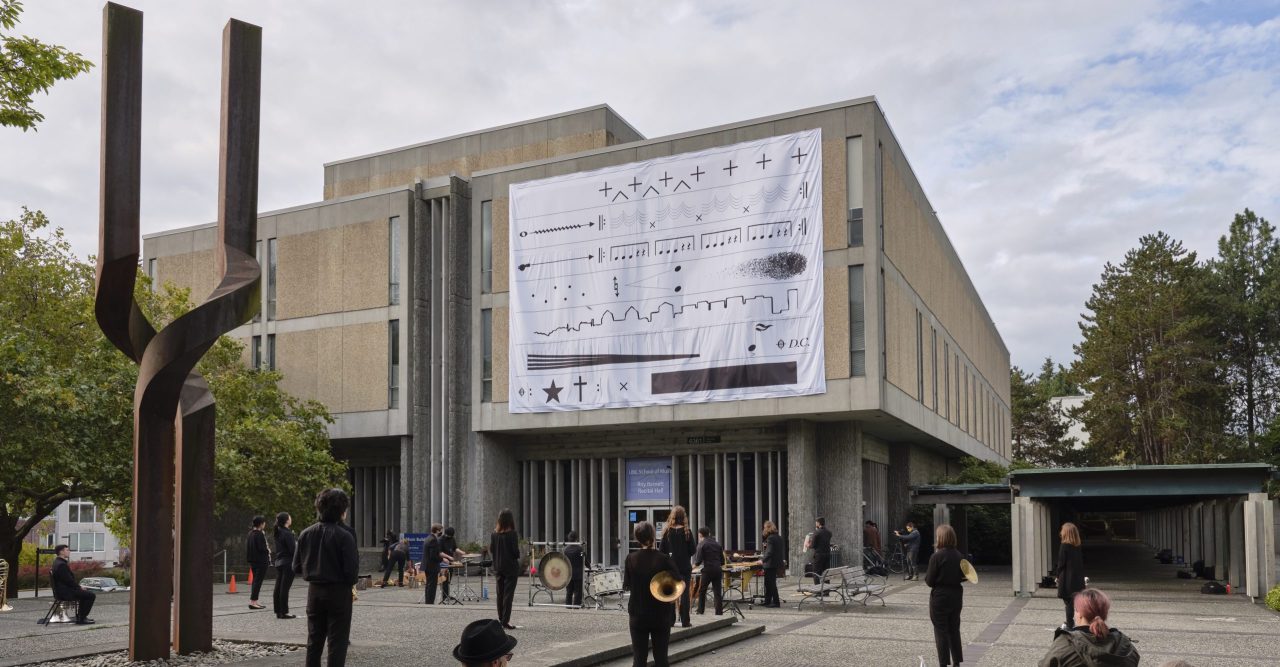
Around the corner from the Belkin Gallery, Raven Chacon's score American Ledger (No. 1) hangs on the exterior of the Music Building at 6361 Memorial Road, UBC. The score incorporates a traditional musical score with Navajo iconography and is to be performed by "many players with sustaining and percussive instruments, voices, coins, axe and wood, a police whistle and the striking of a match."
[more] -
Event
8 Sep 2020
Soundings: Peter Morin and Parmela Attariwala

In Part One of NDN Love Songs, Peter Morin offers a score of instructions to musicians presented alongside seven video portraits. Part Two presents videos of recordings of previous iterations of the Soundings exhibition at Agnes Etherington Art Centre, Gund Gallery and Kitchener-Waterloo Art Gallery. In Part Three, Parmela Attariwala performs the score on the violin at the Belkin.
[more] -
Event
Wednesday 21 Oct 2020 at 3 pm
Wednesday 28 Oct 2020 at 3 pm
Wednesday 25 Nov 2020 at 2 pm
Wednesday 2 Dec 2020 at 3 pm
Sunday 6 Dec 2020 at 3 pm
Soundings: Olivia Whetung and the Ladner Clock Tower Carillon
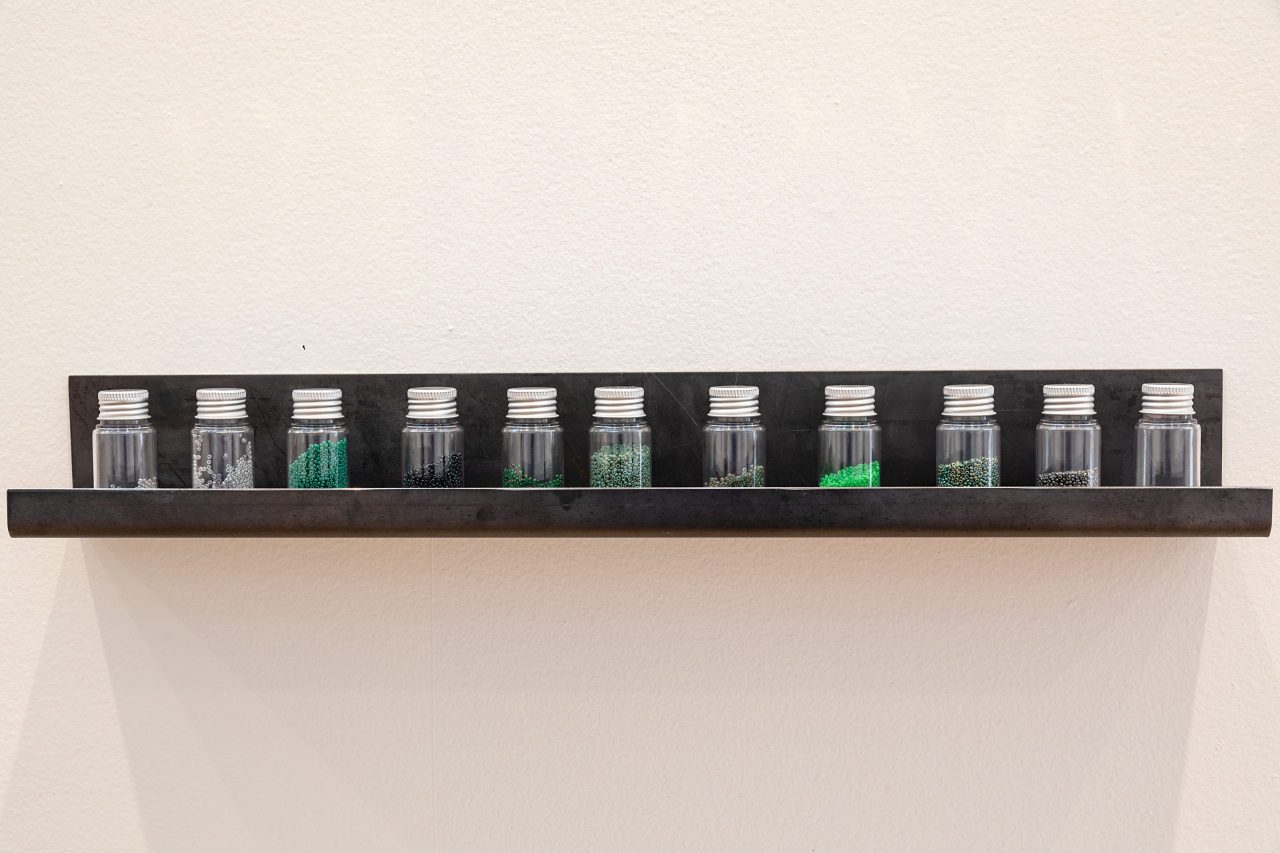
Whetung invites gallery visitors to pour different coloured beads from individual small jars into one large vessel, creating a layering of sounds as each bead joins the growing pile. Once the container is filled, the artist turns the amalgam of beads into an entirely new piece – a rectangular beadwork unique to the Belkin’s iteration of the exhibition.
[more] -
Event
8 Sep 2020
Soundings: Greg Staats
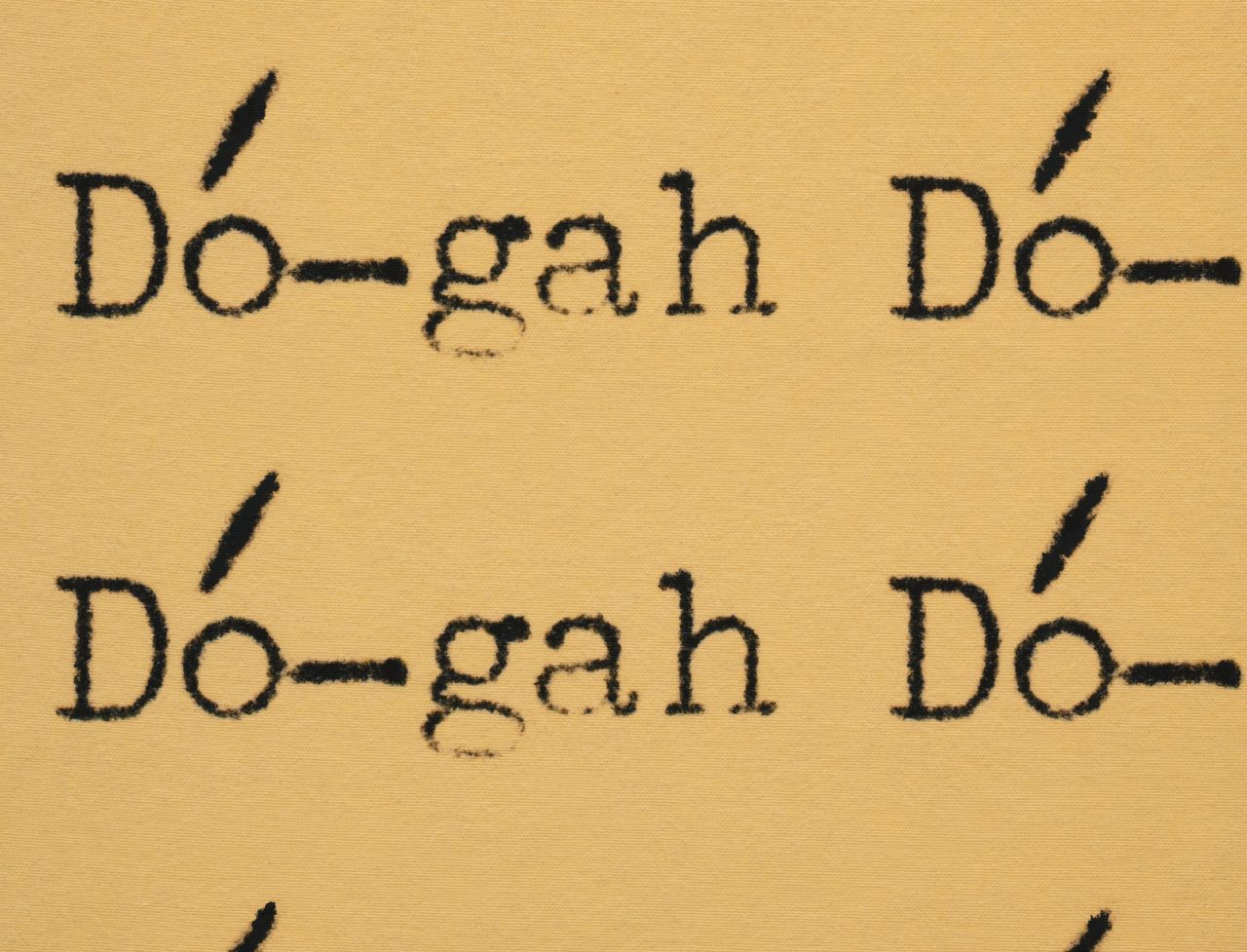 [more]
[more] -
Event
Soundings: Germaine Koh
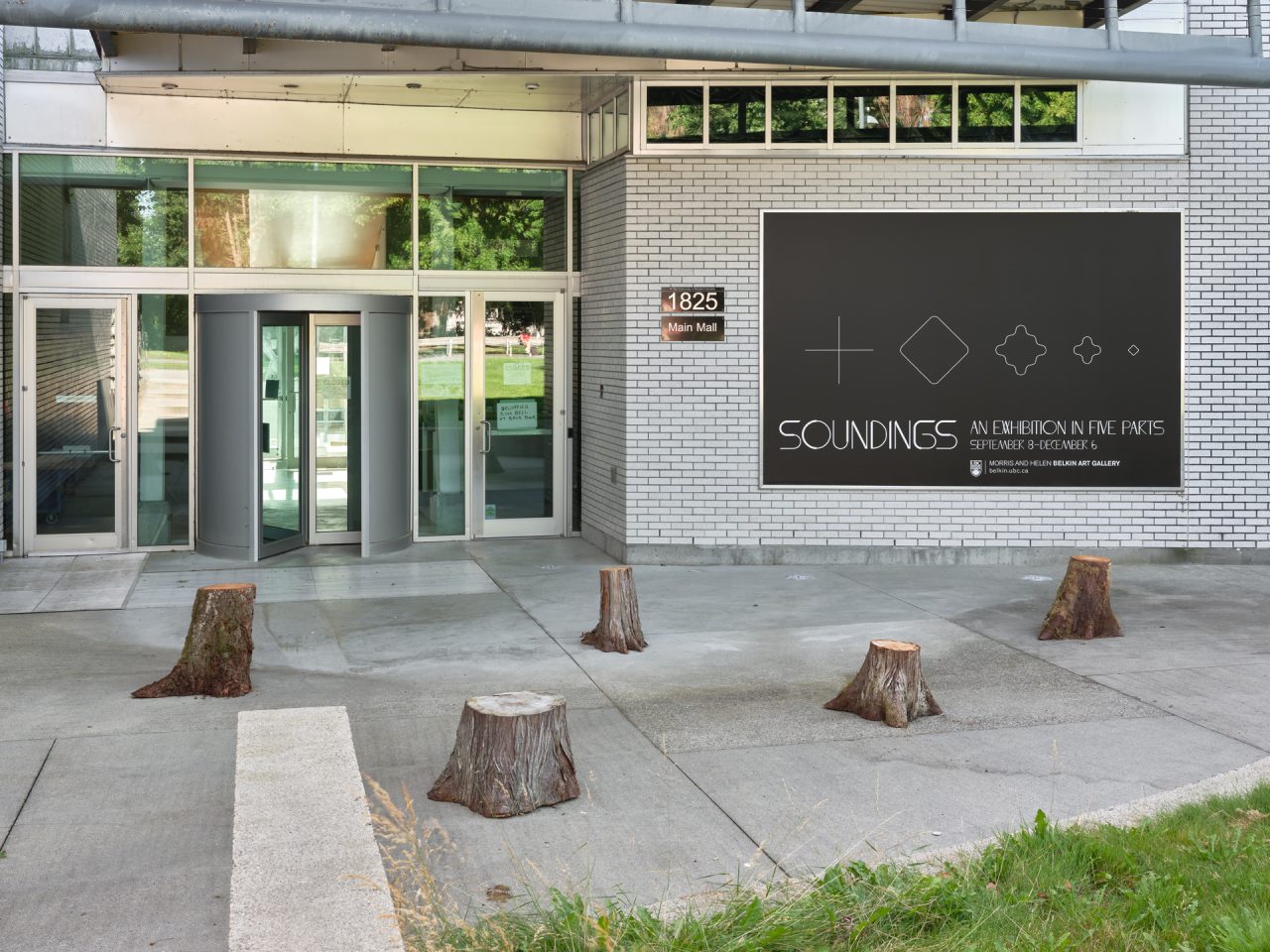
Germaine Koh’s drum is made from one of the cedar tree stumps she first brought to site for use as physical distancing stations. She worked with Belkin staff during Summer 2020 to develop COVID-19 safety and visitor interaction protocols that recognized the importance of collective care and teamwork.
[more] -
Event
Dec 2020
Soundings: UBC Contemporary Players Respond
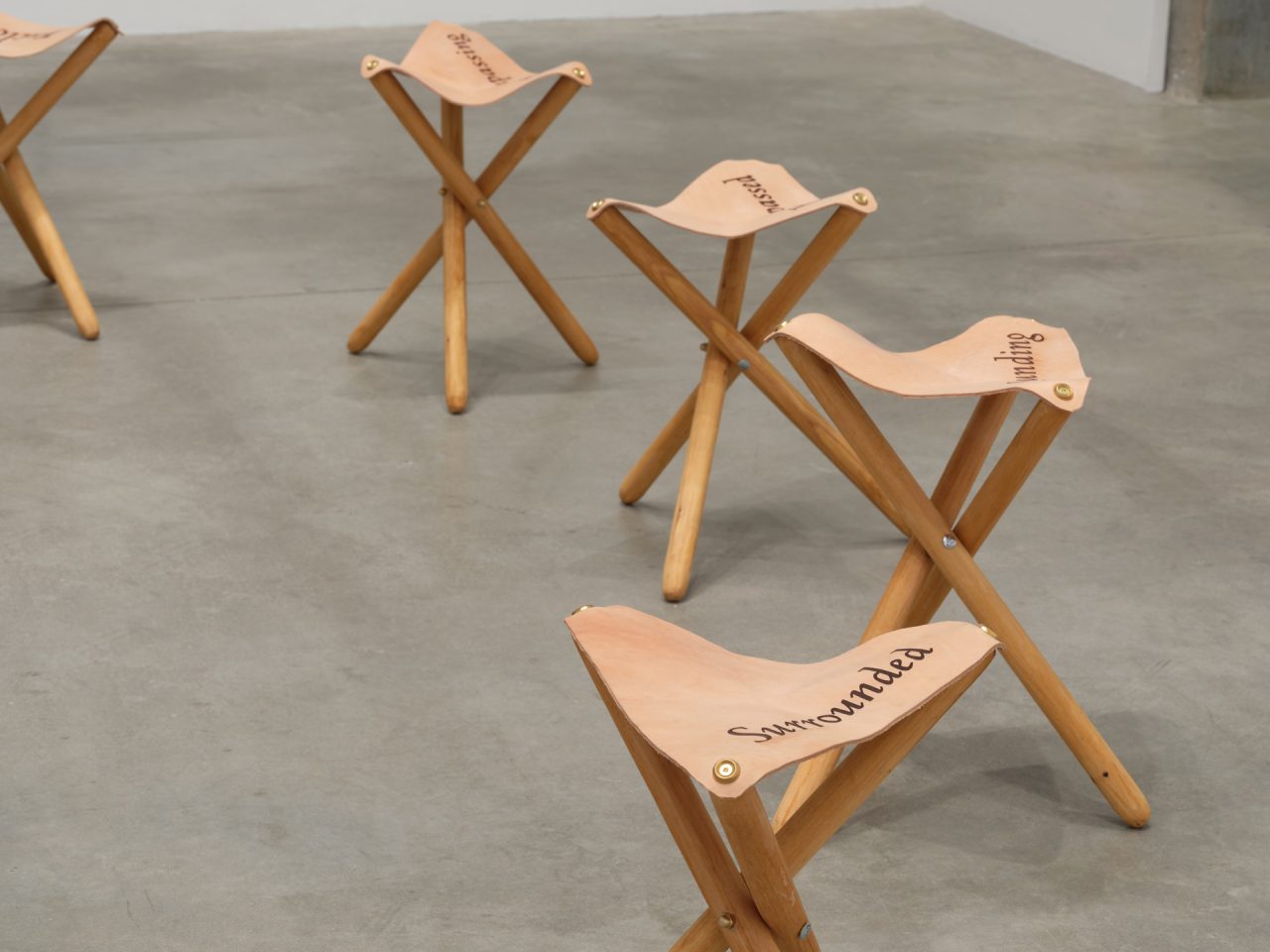
In lieu of a public concert at the Belkin as has occurred in recent years, musicians from UBC Contemporary Players chose a work by a Canadian composer to perform in an empty gallery, responding to the works of Soundings: An Exhibition in Five Parts. Videos of these performances are shared here for reference, research, and enjoyment in perpetuity. Soundings asks how a score can be a call and a tool for decolonization. The exhibition's corresponding investigations take at their centre questions of embodiment and subjectivity, of calls and responses. What are the practical matters of embodied decolonization, and how can we practice them? How does embodiment facilitate unlearning, unknowing, and the visioning of Indigenous ontologies?
[more] -
News
31 Aug 2020
Soundings: Reading Room
The following is a list of resources related to Soundings: An Exhibition in Five Parts. The list of resources compiled here is not an official recommendation, but is rather a list of suggested readings compiled by Public Programs and graduate student researchers at the Belkin Art Gallery. These readings are intended to provide additional context for the exhibition and act as springboards for further research or questions stemming from the exhibition, artists, and works involved.
[more] -
News
30 Nov 2020
Belkin x CRWR: Soundings
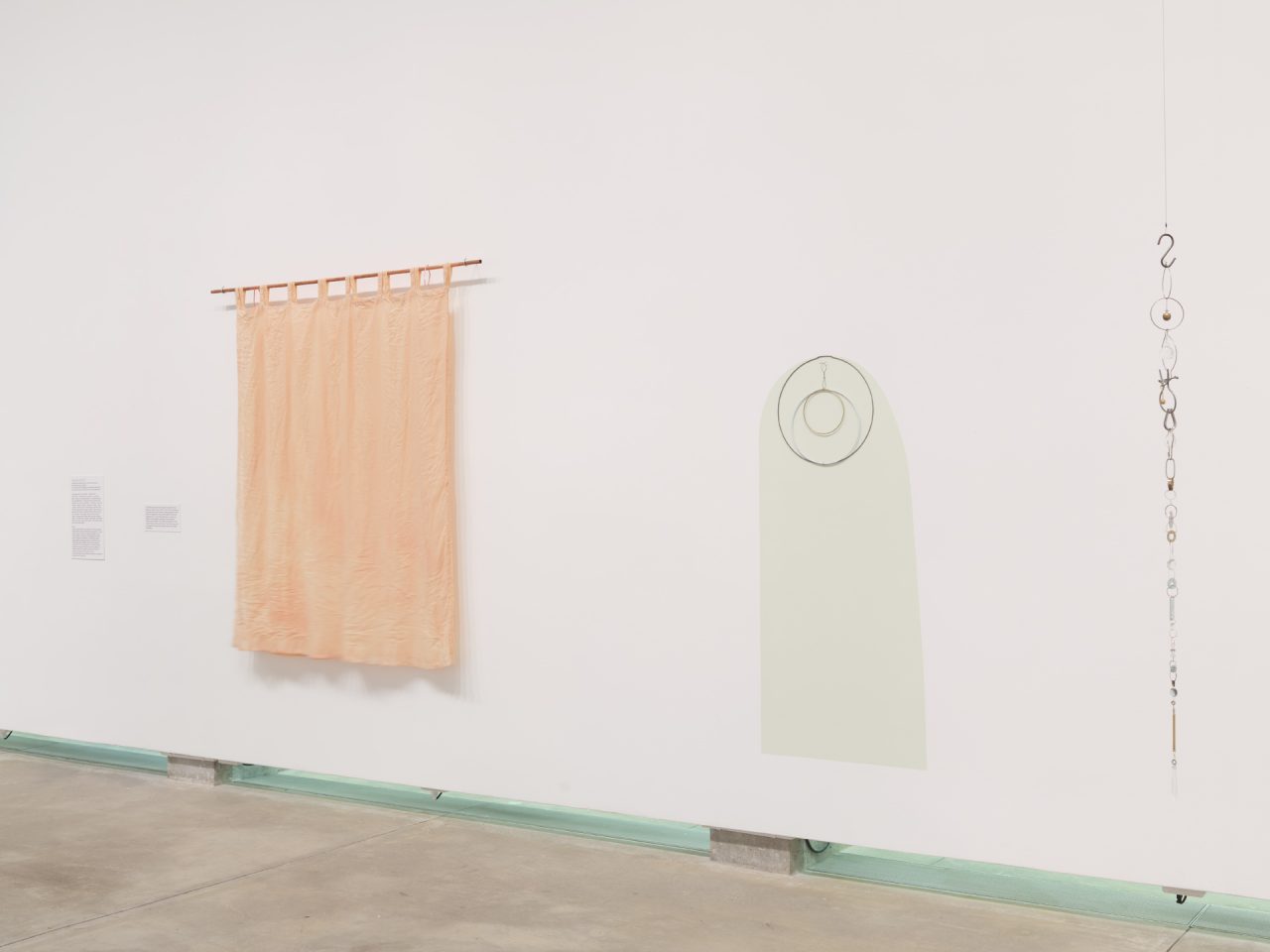
In response to Soundings: An Exhibition in Five Parts, a group of Creative Writing graduate students at the University of British Columbia have made a series of activities for visitors to take part in during their visits to the gallery. Thinking through the idea of a score as a call to respond, these activities range from sound walks to reflective worksheets to small group workshops.
[more]